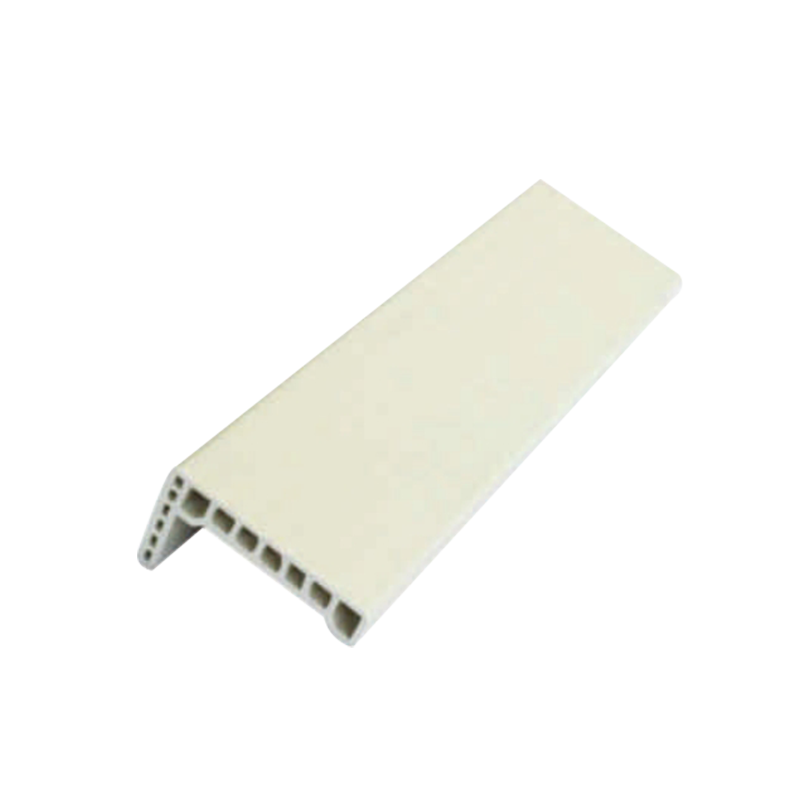A flat WPC door architrave is a type of decorative molding that frames a doorway. Unlike traditional architraves that might have an intricate profile, a flat architrave has a simple, clean, and modern look. WPC stands for Wood-Plastic Composite, a material made from a combination of wood fibers and thermoplastics. This unique blend gives the architrave the best properties of both wood and plastic, making it an excellent choice for modern construction and renovation projects.
The Rise of WPC in Building Materials
In recent years, WPC has become a popular alternative to traditional materials like solid wood, MDF (Medium-Density Fiberboard), and PVC (Polyvinyl Chloride). Its growing use in products like decking, wall panels, and door frames is due to its superior performance characteristics. For door architraves, WPC offers a perfect balance of aesthetics and practicality.
Key Features and Benefits of Flat WPC Door Architraves
The choice of a flat WPC door architrave offers a range of significant advantages:
- Exceptional Durability and Longevity: WPC is highly resistant to common issues that plague wood, such as warping, cracking, and rotting. It also stands up well to impacts and general wear and tear, ensuring that your doorway frame remains pristine for many years.
- Waterproof and Moisture-Resistant: The plastic component in WPC makes it impervious to water. This is a crucial benefit for areas with high humidity, such as bathrooms, kitchens, and basements, where wooden architraves would be susceptible to mold and decay.
- Termite and Pest-Resistant: Unlike solid wood, WPC is not an organic food source for termites or other wood-boring insects. This eliminates the need for chemical treatments and provides peace of mind that your architrave is protected from pests.
- Low Maintenance: A flat WPC door architrave requires minimal upkeep. It doesn’t need to be painted or sealed regularly, and a simple wipe-down with a damp cloth is all that’s needed to keep it clean.
- Eco-Friendly: Many WPC products are made from recycled wood and plastic, reducing waste and the demand for new timber. This makes it a more sustainable option compared to using virgin wood.
- Ease of Installation: WPC is a lightweight material that is easy to cut, nail, and screw, similar to wood. This simplifies the installation process for both professionals and DIY enthusiasts. Its consistent dimensions and smooth surface also save time on sanding and preparation.
Applications and Design Considerations
A flat WPC door architrave is a versatile design element that complements various architectural styles. Its simple, clean lines make it a natural fit for minimalist, contemporary, and Scandinavian interior designs. It provides a sleek, understated frame that doesn’t compete with other design elements but rather enhances them.
When selecting a flat WPC door architrave, consider the following:
- Finish: WPC can be manufactured to have a smooth, painted finish or a wood-grain texture. A flat profile often looks best with a smooth, solid color, such as white, gray, or black, to emphasize its modern aesthetic.
- Size: Architraves come in different widths and thicknesses. The choice should be proportional to the size of the door and the overall scale of the room. A wider architrave can create a bolder statement, while a narrower one can provide a more subtle frame.
- Integration with Skirting Boards: For a cohesive look, the flat architrave should be paired with a matching WPC skirting board (baseboard) with a similar profile. This creates a seamless transition from the wall to the floor.
Professional Installation and Finishing Tips
While installing a flat WPC door architrave is straightforward, a few professional tips can ensure a perfect finish:
- Use the Right Tools: Use a fine-tooth saw to get clean cuts without chipping the material. A miter saw is ideal for creating precise 45-degree angle cuts for the corners.
- Secure Fastening: Use strong adhesives specifically designed for WPC or finish nails to secure the architrave to the door frame. Ensure the nails are countersunk for a smooth finish.
- Filling and Painting: Although WPC is a finished product, small gaps at the joints or nail holes can be filled with a paintable filler. If you want to paint the architrave a specific color, choose a high-quality paint suitable for plastic or composite materials to ensure a lasting finish.
In conclusion, the flat WPC door architrave is more than just a decorative trim. It’s a durable, low-maintenance, and stylish solution that meets the demands of modern living. Its combination of performance and sleek design makes it a smart investment for any building or renovation project, providing a beautiful and long-lasting finish to your doorways.








